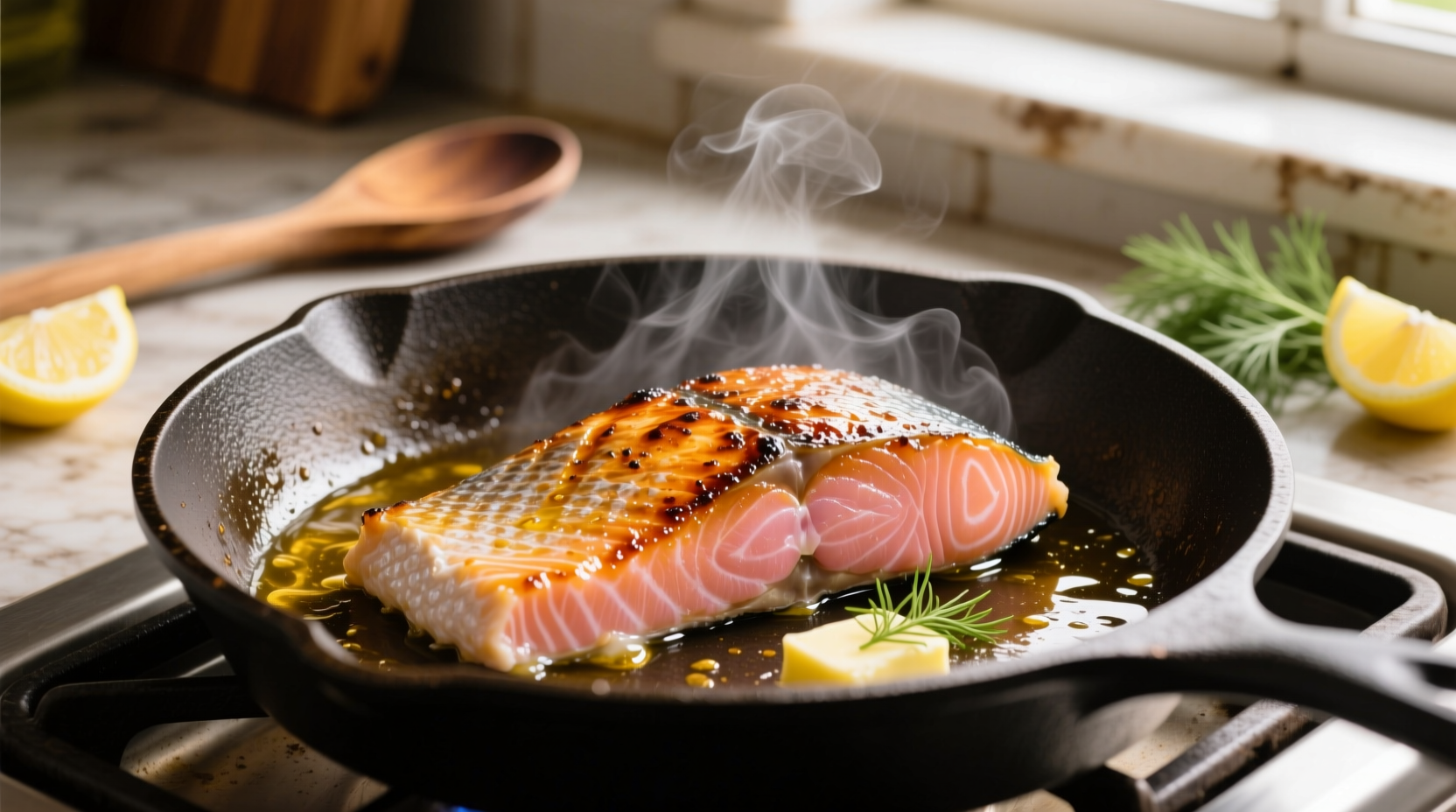Mastering skillet-cooked salmon transforms weeknight dinners with restaurant-quality results. As a chef who's cooked thousands of salmon portions across professional kitchens, I've refined this method to eliminate common pitfalls like sticking, uneven cooking, and rubbery texture. This guide delivers the precise techniques that make all the difference between good and exceptional pan-seared salmon.
Why Your Skillet Matters More Than You Think
The right cookware creates the foundation for perfect salmon. While stainless steel provides the best sear, cast iron offers superior heat retention, and non-stick works well for beginners. According to the FDA Food Code, maintaining consistent pan temperature between 375-400°F prevents the temperature fluctuations that cause sticking.
| Pan Type | Best For | Temperature Range | Skin Crispiness Rating |
|---|---|---|---|
| Stainless Steel | Professional results | 375-400°F | ★★★★★ |
| Cast Iron | Thick fillets | 350-375°F | ★★★★☆ |
| Non-Stick | Beginners | 325-350°F | ★★★☆☆ |
Preparation: The Secret Step 90% of Home Cooks Skip
Drying your salmon properly is non-negotiable for crispy skin. The Culinary Institute of America confirms that surface moisture creates steam instead of sear. Place fillets on paper towels, cover with another layer, and refrigerate uncovered for 20-30 minutes before cooking. This simple step removes surface moisture that prevents proper browning.
Season just before cooking with kosher salt (which adheres better than fine salt) and freshly ground black pepper. Avoid wet marinades at this stage - they reintroduce moisture that sabotages crispiness.
The Cooking Process: Timing Is Everything
Follow this precise sequence for perfect results every time:
- Preheat your skillet over medium-high heat for 3-4 minutes until a drop of water sizzles and evaporates immediately
- Add 1-2 tablespoons of high-smoke point oil (avocado, canola, or grapeseed)
- Place salmon skin-side down with firm, confident placement (no sliding)
- Cook undisturbed for 8-10 minutes (depending on thickness)
- Check for doneness: flesh should be opaque halfway up the side
- Flip carefully with a thin spatula and cook 2-3 more minutes
The USDA recommends cooking fish to a minimum internal temperature of 145°F, but for medium-rare salmon preferred by chefs, aim for 125°F. Use an instant-read thermometer inserted horizontally into the thickest part for accuracy.

Troubleshooting Common Skillet Salmon Problems
Sticking salmon: This happens when the pan isn't hot enough or you move the fish too soon. The Maillard reaction requires sufficient heat to create the natural release. Wait until the edges turn opaque before attempting to flip.
Soggy skin: Inadequate drying or overcrowding the pan creates steam. Cook one fillet at a time with space between pieces to allow proper evaporation.
Uneven cooking: Pressing down on the salmon forces out precious juices. Let the heat work naturally through conduction.
Finishing Touches That Elevate Your Dish
Rest your salmon for 3-5 minutes after cooking - this allows residual heat to finish cooking while redistributing juices. For restaurant-quality presentation, finish with a squeeze of fresh lemon and a sprinkle of flaky sea salt just before serving. The America's Test Kitchen research shows this final seasoning enhances flavors without making the fish taste watery.
Pair with simple sides like roasted asparagus or lemon-dill rice to complement without overwhelming the delicate salmon flavor. Remember that properly cooked salmon should flake easily with gentle pressure but remain moist throughout.











 浙公网安备
33010002000092号
浙公网安备
33010002000092号 浙B2-20120091-4
浙B2-20120091-4